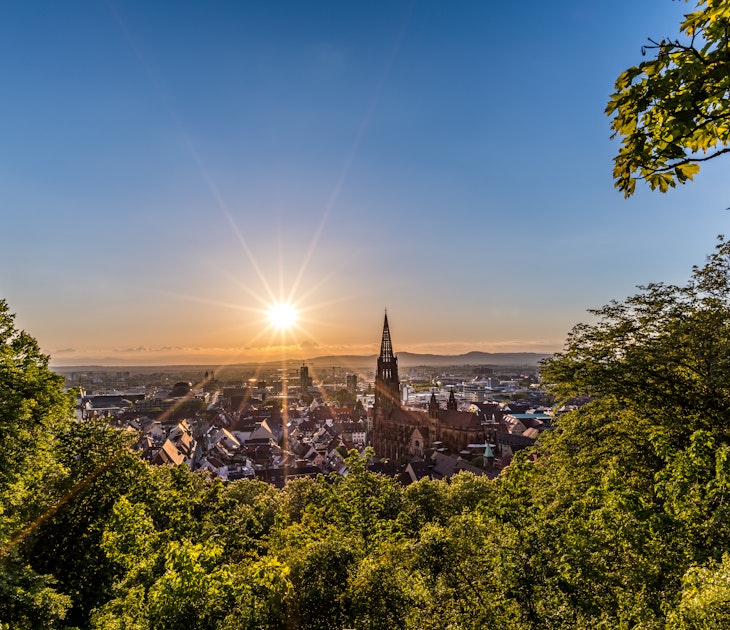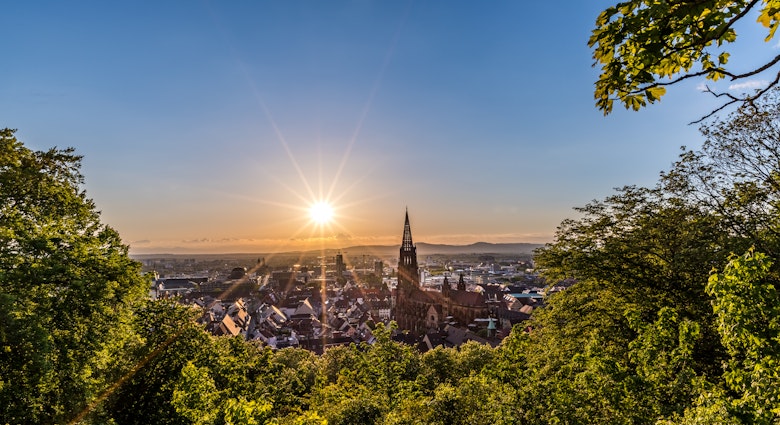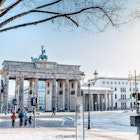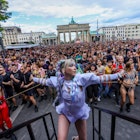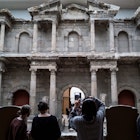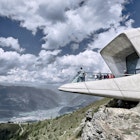You won't want to miss Berlin's all-night-long techno parties – be sure to leave time for the vast range of museums here, too.
The German capital boasts almost 200 of them, ranging from world-renowned historical galleries to newer, more – unusual collections – many housed in creatively repurposed spaces.
History buffs will unsurprisingly find much to love here, with monuments and museums that explore the complicated, often cruel eras of the Weimar Republic, the German Reich and the communist GDR.
The Berlin of today, meanwhile, has a famously rebellious, artistic spirit – one that informs a variety of contemporary art collections and forward-looking exhibits that tackle of-the-moment issues like gentrification and the climate crisis.
Here's our list of the most interesting museums in Berlin.
Bunker down at Sammlung Boros in Mitte
This converted Nazi-era bunker in Mitte offers a memorable – and oh-so-Berlin – way to experience contemporary art. With no signs identifying the institution and access only granted by advance reservation, it's not your typical user-friendly art hall.
Over the years, the imposing building has had several uses, including as an air-raid shelter during World War II and later as a techno and fetish club. Upon arrival, visitors have to knock on the door and wait to be let in.
On display, are selections from a private collection of around 500 works by artists including Damien Hurst and Ai Weiwei, spread across five floors. The collector who amassed these holdings currently lives with his family in a private apartment on the top floor of the building (unfortunately, not part of the tour). Exhibitions get completely refreshed every few months and often feature new acquisitions.
Tours fill up quickly, so you'll need to reserve well ahead of your visit.
Take a tour of a former Stasi prison – led by a former prisoner
Located in an outlying area of the former East Berlin, an hour away from the city center, this former political prison once run by the notorious Stasi is well worth the trek.
From 1951 to 1989, thousands of GDR opponents and political prisoners were detained here. But what makes the place particularly special are the tours run by former prisoners, who recount gripping details of their time in prison, or by PhD students, who share sinister details about the psychological torture and interrogation techniques used.
The site has a small cafe, but bring snacks and drinks with you, as (unsurprisingly) the site of secretive political prison hasn't attracted many nearby cafes and restaurants.
If you're short on time, the slightly closer-in Stasi Museum – which occupies the security service's former headquarters – offers a similarly dark and eerie experience, including exhibitions documenting the agency's insidious methods.
14 best things to do in Berlin
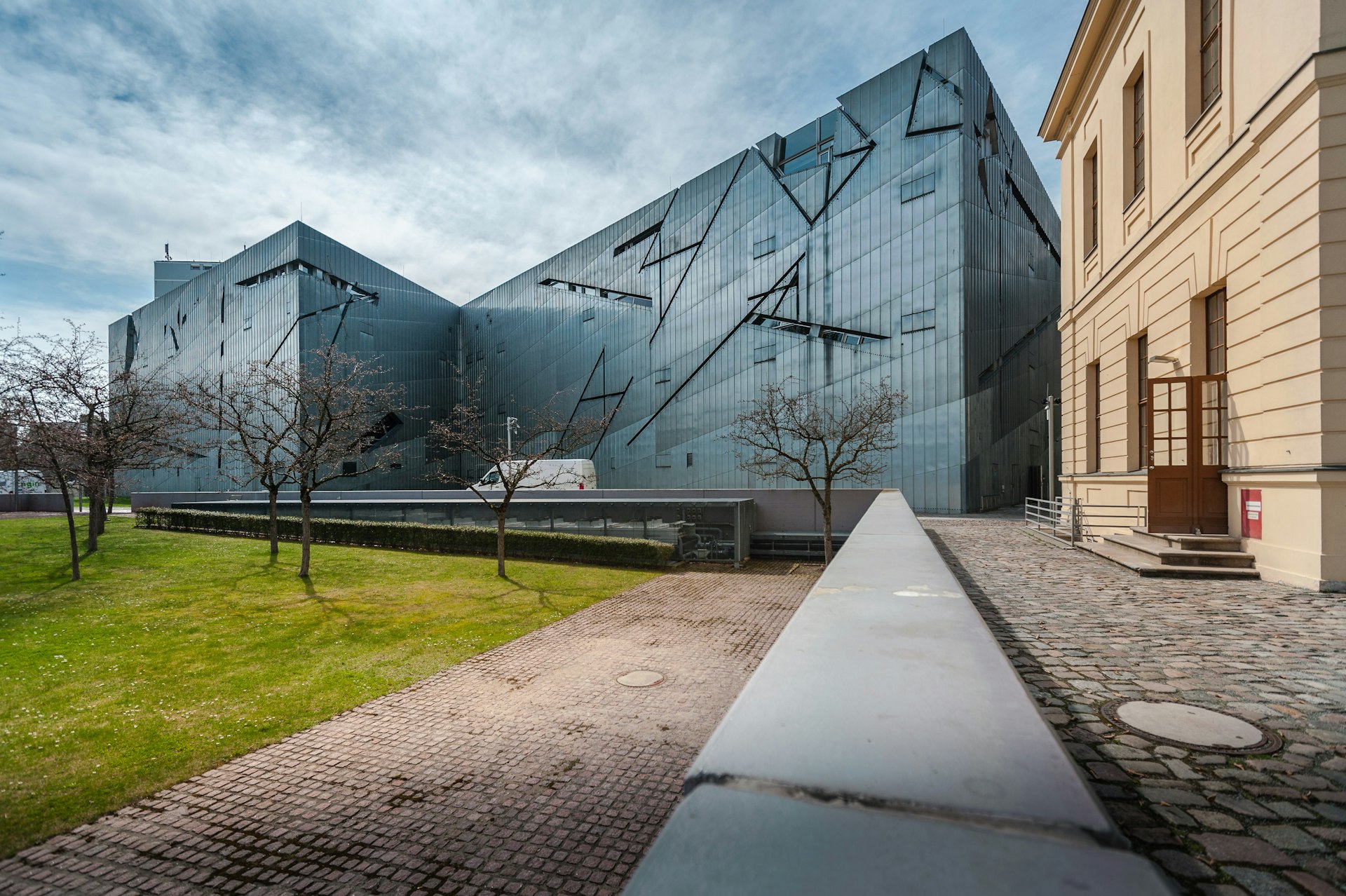
Learn about German-Jewish history at Jüdisches Museum
Berlin's Jewish Museum (Jüdisches Museum) occupies both a baroque palace and a contemporary wing made of metal and glass, with a zigzag floor plan. Architect Daniel Libeskind wanted to design a place that was more than just a building, but a way to recount German-Jewish history.
The result is an immersive, often unsettling experience, with a disorienting basement in which visitors can get lost among underground axes, sloping floors, angled walls and bare concrete "voids."
For example, stumble up the "axis of the Holocaust" and you'll find an unmarked, heavy, black door. Step through it into the "voided void" – a cold, dimly lit tower with muffled sounds outside – and feel a chill down your spine.
Elsewhere, the Shalekhet (fallen leaves) installation covers the floor with 10,000 heavy iron plates etched with faces, representing the victims of war. This large-scale display exemplifies the thoughtful, artistic and moving approach this museum takes to its complex subject matter.
Glimpse what the future holds at Futurium
If you'd like to see what the future holds, Berlin's new Futurium is the place to go. Opened in 2019 and located next to Berlin's central station, Futurium's large exhibition floor imagines the future of cities, work, travel and medicine. Exhibits touch on significant issues of our time, like climate change, technology, and nature's relationship.
A talking robot greets visitors at the entrance, while the exhibition itself encourages you to reflect on provocative ideas – like your consumption or how far you'd be willing to go to protect the climate – through interactive exhibits.
If you've ever pondered questions like "Will my robot and I grow old together?" or "Will I eat grasshoppers for breakfast?" you might find answers here.

Immerse yourself in art history on Museum Island
Several of Berlin's most popular museums are conveniently clumped together on Museum Island, giving visitors the chance to pick a few and explore them in one (long) day.
Perhaps most famous is the Pergamonmuseum, which controversially houses pieces hauled to Germany from the Middle East, including the magnificent Ishtar Gate, which once served as a portal to the inner city of ancient Babylon.
Right next door is the Neues Museum, where you can see works from ancient Egypt, including the 3300-year-old bust of Nefertiti. Despite controversies over Berlin's acquisition and refusal to return it, the bust is a must-see for history buffs.
If that leaves you hungry for more, the full-to-bursting collections of the Altes Museum, Altes Nationalgalerie, Bode-Museum and Deutsches Historical Museum are all just a short walk away.
Join the protest at FHXB Museum
Lovingly curated by local residents, the Kreuzberg Friedrichshain museum explores squatting, protest movements and the gentrification of Kreuzberg, Berlin's best-known arts district. Themes tackled by the museum remain relevant today, as steeply rising rents and gentrification threaten to displace local residents and artist studios in the area.
It's also ideally located just off Oranienstrasse, a street with some of the city's best bars and restaurants, making it a great place to go before a night out. After your visit, we recommend getting a cocktail while sitting on a bunk bed at the Multilayerladen bar, just across the street.
Top 20 things to do for free in Berlin
Embrace the surreal at Design Panoptikum
A place to let your creative imagination run free, the Design Panoptikum in Mitte displays objects such as dummies, medical devices, globes, gas masks, ski boots and musical instruments in weird and unexpected displays. Spooky, whimsical and playful, the place is an upbeat ode to creativity – it deliberately doesn't include objects of torture or violence.
Charismatic owner Vlad began amassing these objects 15 years ago. His collection has now expanded to around 1000 pieces bought cheaply from flea markets, antique shops and scouring the internet. Stick around to ask him questions after your visit: it's half the fun.

Enjoy a masterpiece of a building (and a stirring collection) at Neues Nationalgalerie
The Neues Nationalgalerie brings together key artworks from the 20th century, including pieces by Salvador Dalí, Edvard Munch, Otto Dix and Pablo Picasso. Designed by Mies van der Rohe and opened in 1968, the museum's original building – almost a temple of high modernism – is a work of art in itself.
Highlights of the collection include works by artists deemed "degenerate" under National Socialism and rich holdings of works that depict the dark side of Berlin's heyday in the early 20th century. Look out for iconic Berlin-centric canvases like Potsdamer Platz by Ernst Ludwig Kirchner and The Skat Players by Otto Dix.
Hop on board the gallery train at Hamburger Bahnhof
Located in a large former train station, the Hamburger Bahnhof holds one of the world's most significant collections of contemporary art, from the 1950s to the present. Spread over around 13,000 sq m (139,930 sq ft) this art hall showcases works by Andy Warhol, Roy Lichtenstein, Joseph Beuys and other 20th-century and contemporary artists.
Tip: wear comfortable shoes that are easy to take off, as some video installations require you to wear your socks. Also, be sure to give yourself enough time to get lost in the sprawling galleries.
You might also like:
Getting around Berlin
How Berlin's powerful history helps modern-day refugees tell their stories
How to do Berlin on a budget

